Having had so much fun on our long road trips to Orange Beach, Alabama and to South Dakota and Colorado, my wife and I were looking for another trip, but shorter, to take at spring break when we didn’t have the grandkids to watch. I had often thought that doing the bourbon trail in Kentucky might be fun (I do like bourbon), but I knew we couldn’t do that in just a four day weekend like we were planning. We talked to our friends P and B (who we went with to South Dakota) about a trip to Louisville. They were up for it so we talked to S and K, our friends we went to Orange Beach with in addition to P and B. They were up for it also. Our plan was to leave early-ish on a Thursday morning and we only had three items on our agenda: visit the Louisville Slugger factory, visit two or three bourbon distillers, and meet up with another couple who used to live in the St. Louis area. This couple has lived in Louisville for 40+ years and we get don’t see them that often. All in all we’ve all known each other for at least 45+ years, some 50+ years.
Louisville, Ky is about 270 miles/435 km (4 hours) east from my house; straight across lower Illinois and the toes of Indiana via I-64. I’m sure our time differed from the 4 hours that Google quoted due to stops. Even without the stops there would be a time variance based on the degree to which we viewed I-64’s stated speed limit as an absolute maximum versus a recommendation. We traveled there in two cars. My wife and I rode with P & B in their car and S & K drove their car. I don’t remember a thing about the drive to Louisville so it must have been pretty uneventful if not down right boring.
We arrived in Louisville early in the afternoon with plenty of time to visit the Louisville Slugger Museum and Factory. Growing up in the 50s, every boy’s dream who played baseball (sandlot or organized) was to own a black Louisville Slugger bat. You were bound to get more hits and longer hits with that bat than any of the “regular” bats. Looking back now many decades later I realize that was my first introduction to a designer label … and I always that it was just the gals that fell for that stuff.
The museum was smallish but very nice and the factory tour was interesting. I forget what it cost but it was worth it and I’d recommend it to anyone who has even just a passing interest in baseball. One thing that really struck me was when, after purchasing the ticket for the tour, they directed us to a large room with roped off lanes for queuing up to wait to get into the factory. One could see it was designed for large crowds but the room was nearly empty and we had only about a five minute wait. Forget AARP and senior discounts, the big advantage of being retired is the ability to not have to play tourist in the summer during the peak season and being able to go places on week days when everyone else is in school and at work. Huge difference in crowds and your ability to enjoy and take in the experience.
However I have noticed one drawback while playing tourist, going grocery shopping, taking a deep water class at the Y, and just going places in general during weekdays: we’re always surrounded by old people. I think I’m allowed to say that – I mean I’m old enough that I watched The Mickey Mouse Club and Howdy Doody TV shows before there were reruns. I love to go to Chick-fil-A, and not just for the food, but also just to be around younger people, adults and kids. End of digression.
Not to insult your intelligence by pointing out the obvious, but this is the front entrance to the Louisville Slugger Museum and Factory. The doors are in that dark area behind the bat.

After our factory tour and museum visit we looked up places we might go to get a late afternoon snack and or diner. Turns out there was an interesting sounding whiskey bar and restaurant not too far from us. These are some photos I took around the area of the Louisville Slugger Museum and Factory as we walked to the whiskey bar.
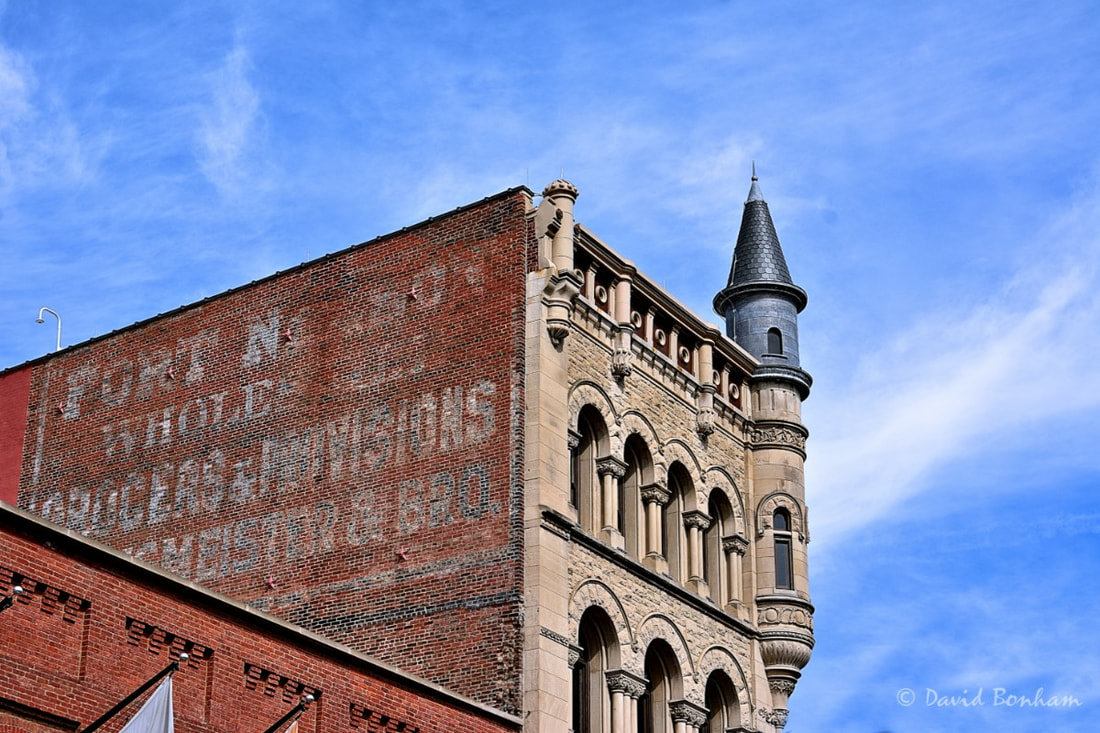
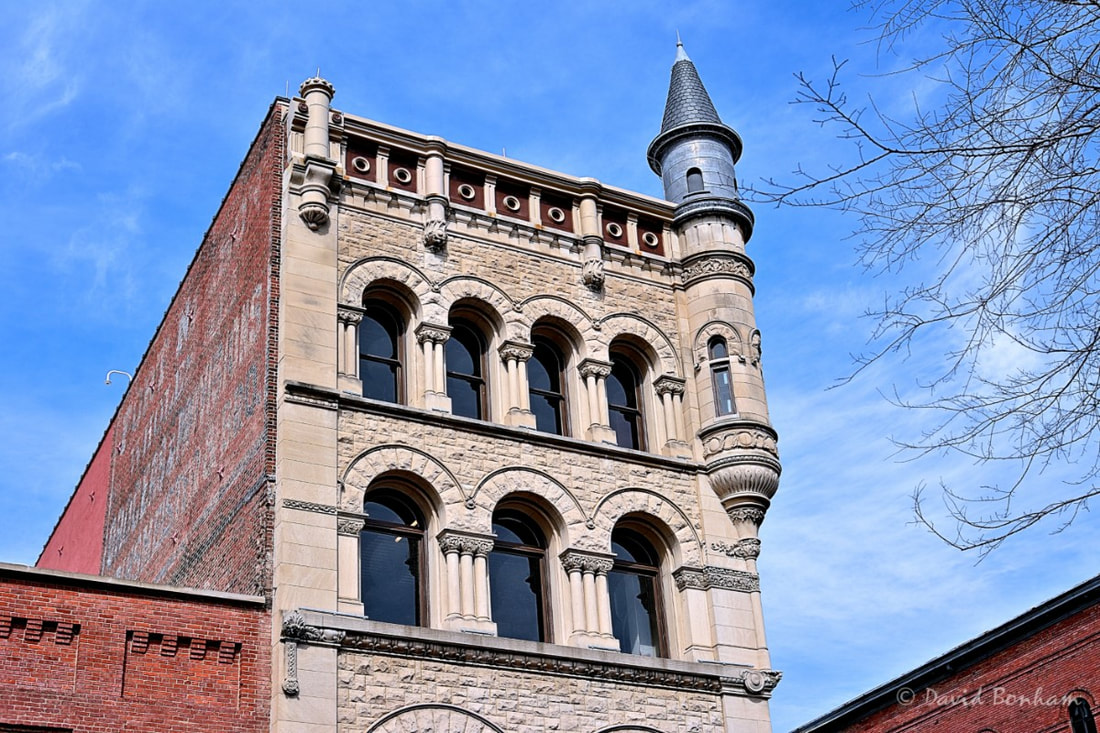
I took this picture because the statue reminds me of my favorite Disney movie character when I was a kid: Johnny Tremain. I also like the juxtaposition with the modern face of the oriental girl in the advertising in the lower center
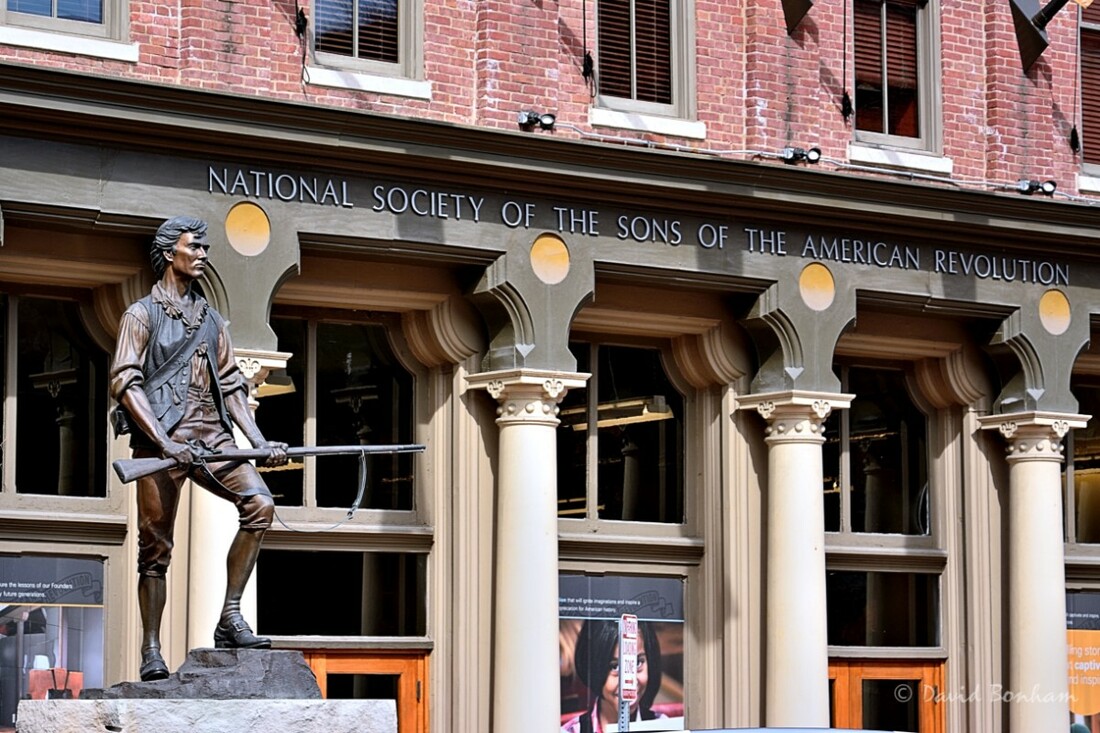
I cannot fully express just how gross I think this statue is. In person it is so much worse than this photo. It’s bad enough that they take a true masterpiece of marble sculpture and redo it in gold, but to make it even worse, the statue is thirty feet tall and stands on an eight foot tall pedestal. I know all about “… the eye of the beholder” concept so this is just my opinion but sometimes I think that eye is blind.
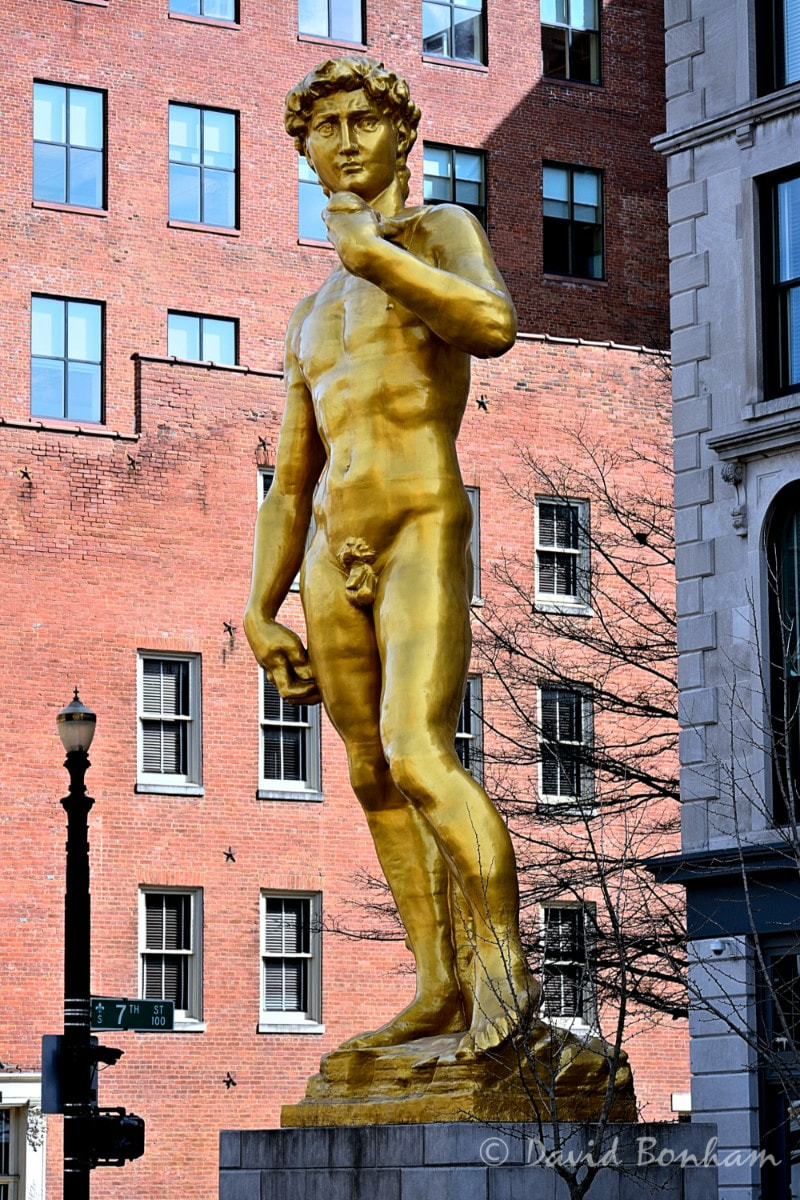
I don’t know what this building is but it certainly caught my attention.

This is from the same photo above but I processed it with the perspective correction tool in my editing software. The problem is when corrections are made, especially large ones like this where both the vertical and horizontal lines are way off and the empty space in the margins is small, you loose part of the picture. In this case a large portion of the top and just over one story from the bottom.

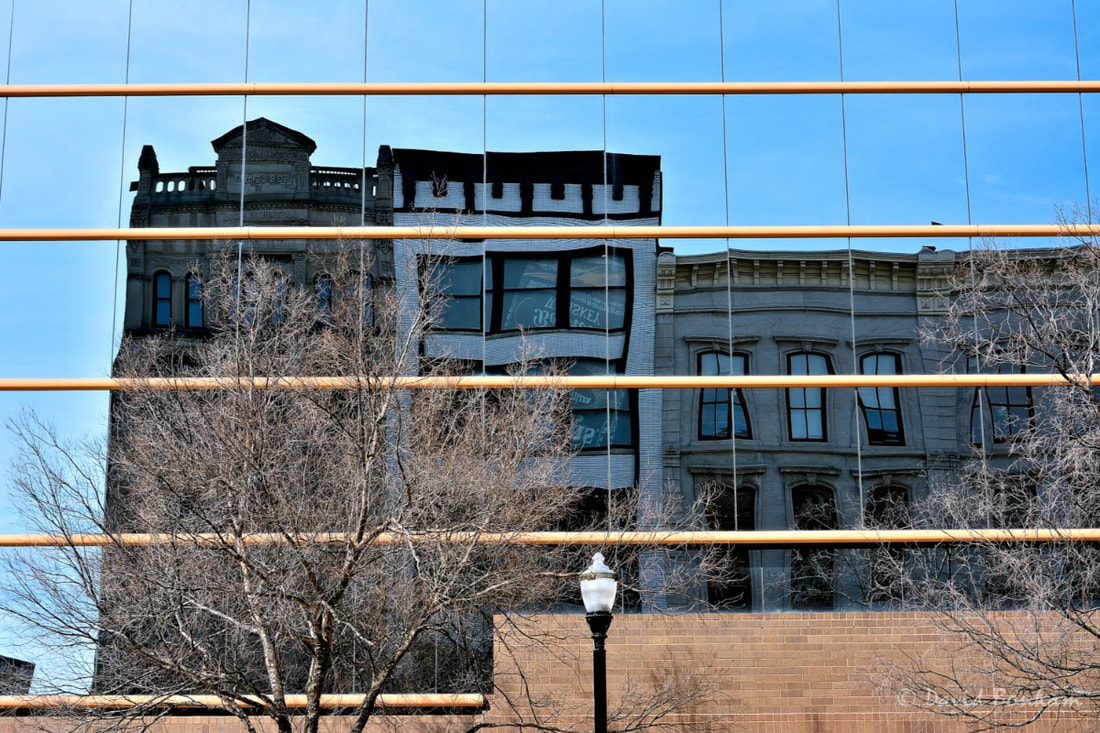
This is looking out the window from the whiskey bar/restaurant we went to. There were several of these penguins around the side and the front of the building’s roof line. Why I don’t know but then I don’t know why someone would think that that abominable, golden, thirty foot knock off of Michelangelo’s David is something to have and to display.

We toured two bourbon distilleries: Jim Bean and Makers Mark. The first set of photos is from the Jim Beam distillery. Don’t let these outdoor photos of the buildings fool you. Where the bourbons are distilled (they distill several brand names) looks like a small oil refinery or chemical plant. Lots of metal holding tanks and all sorts of sizes of steel pipes running everywhere.
This first building, the still house, is the visitors center, gift shop, and holding area for lining up for the tour. We got there early on a weekday and avoided the rush, not that there was much of one.
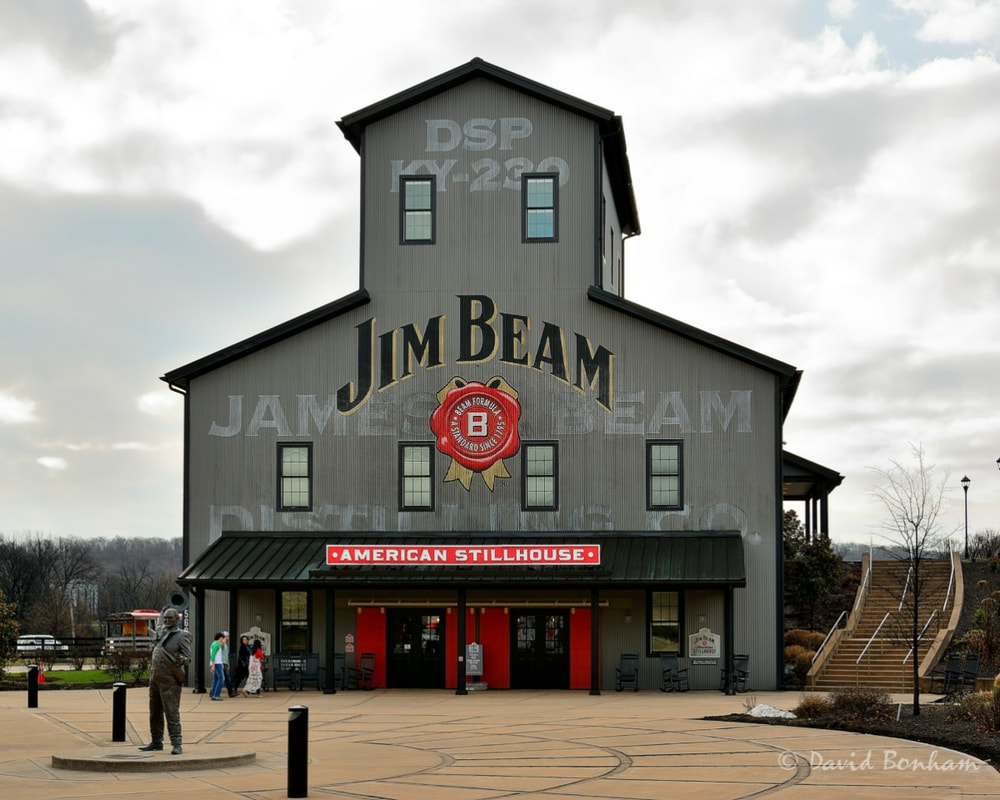
The large black buildings are the warehouses where the bourbon is aged in oak barrels (there are several more buildings on the property). The buildings are called rickhouses or sometimes rackhouses. They are painted black because they will turn black anyway do to a fungus that grows on them. The fungus lives on the ethanol that evaporates from the barrels during the aging process. This evaporation has is called the angels’ share. A few years ago the Jim Beam brand came up with a clever marketing name for a new bourbon. The bourbon was based on the liquid they were able to squeeze out of the staves of the aging barrels. The new bourbon was call “The Devil’s Cut”.
I just loved the irony of these two huge buildings filled with hundreds of gallons of whiskey surrounding the small church.

Some info on bourbon might be in order. U. S. Federal standards for being able to designate a whiskey as straight bourbon whisky are that it must be made in the U. S., must be made with a grain mixture that is at least 51% corn (malted barley, rye, and wheat are the other grains usually added), must be distilled to no more than 160 proof (which is 80% alcohol), and it must be aged at least two years in new, charred, oak barrels. Also flavorings and coloring cannot be added to it. The bourbon does not have to be made in Kentucky unless you are calling it Kentucky bourbon.
Below is a bottle of one of the Beam distillery’s high end bourbons (Knob Creek) being bottled for me. My initials are on the green dot so I’ll know which one is mine when they come off the line.


Note that it is a single barrel bourbon meaning the contents of multiple barrels were not mixed together before bottling, it was aged for nine years in it’s barrel, and it is 120 proof (60% alcohol). Most whiskeys and other hard liquors you would order alone or in a mixed drink, e.g. gin and vodka, are 80 proof (40% alcohol). For comparison most (non low-cal) beers have an alcohol content of around 5% and most wines around 12% but some may be one or two percentage points higher or lower.

Another one of the rickhouses. On the tour are guide told about a huge fire at the distillery several years ago. She said that one of the problems the fire department had in fighting the fire was the height of the rickhouse. The hook and ladder truck could not reach the top of the building to get water inside. The fire was pretty devastating and the county changed the building code limiting how many stories a rickhouse could be. I think she said the limit was seven stories.
Unfortunately there have been several large fires over the decades at various distilleries in the area. Just think about it for a minute. You have these huge wooden structures lined with wooden racks stacked high with wooden barrels full of alcohol. I don’t want to ignore the fact that these fires can be devastating but still they must be something to see. Imagine though the time lost when you have warehouses filled with bourbon aged five, eight, or ten years plus that go up in flames. You don’t just go somewhere with your insurance money and buy ten year old bourbon that was made with your secrete recipe.
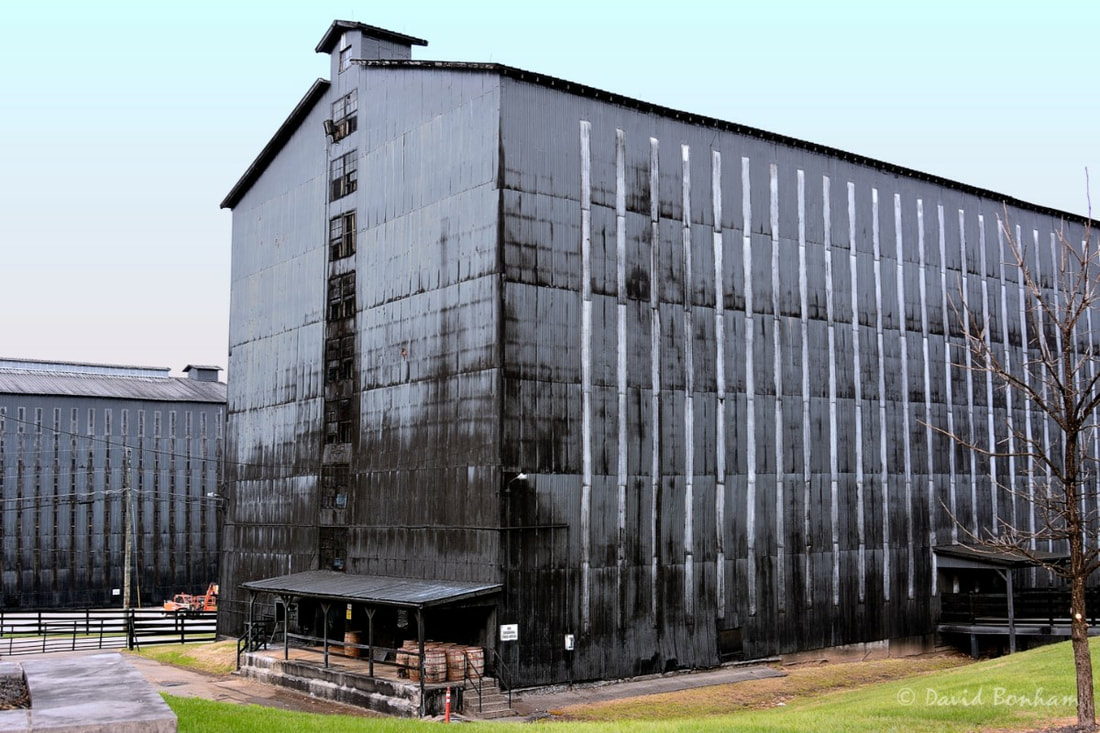
I would imagine that watching barrels of bourbon age would be like watching paint dry.
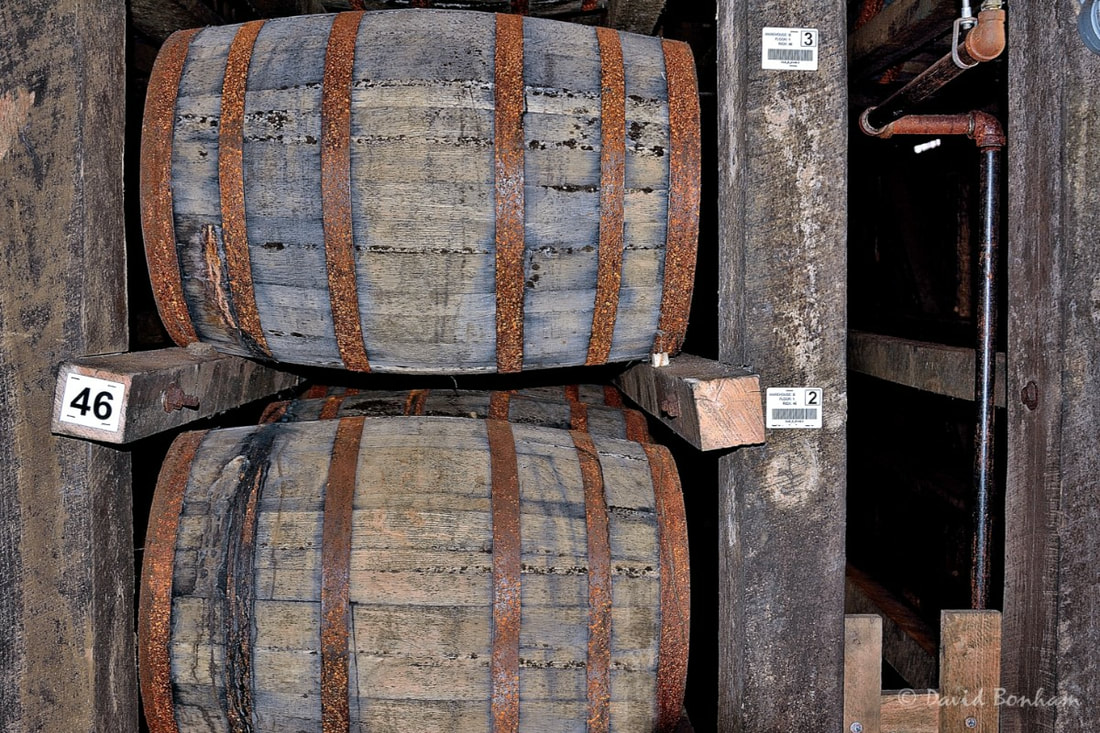
Beam’s 14th million barrel of bourbon in May 2016. They have several milestone barrels on display; most being x millionth barrel
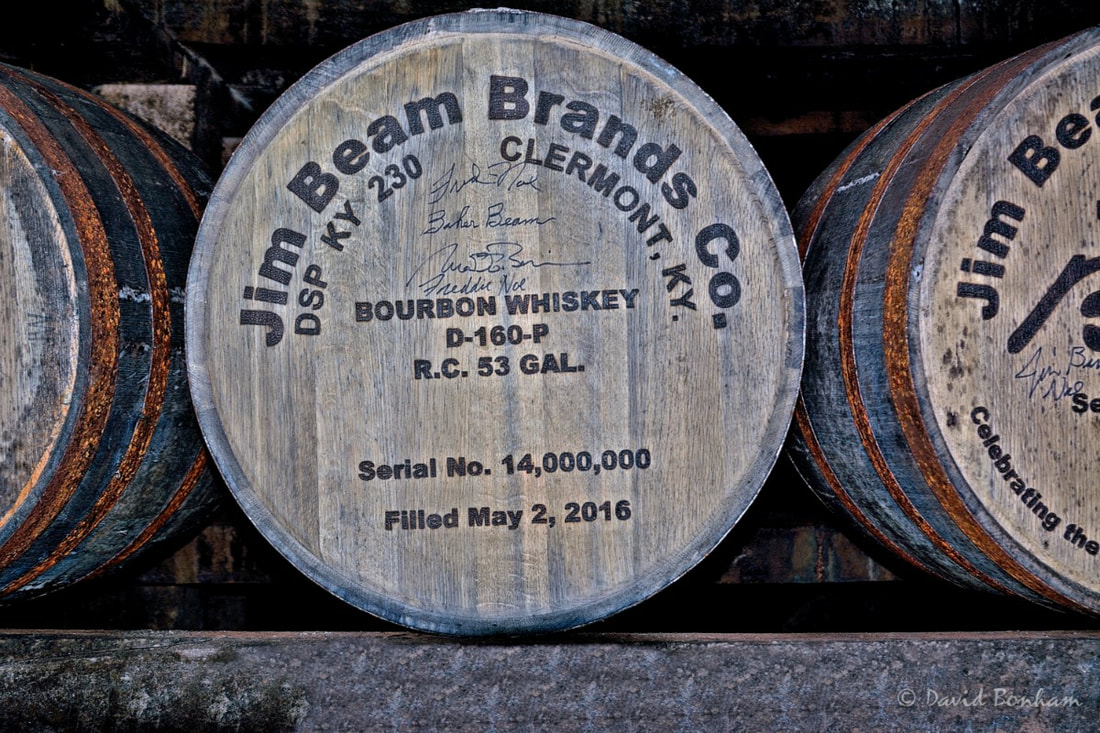
The rest of these photos were all taken at the Maker’s Mark distillery. Makers’ Mark is a much smaller distillery than Jim Beam but I think they have a much smaller product line. The tour felt more intimate and did not take us to the actual heart of the distillery so we didn’t get that steel tanks and webs of steel pipe that we did at Beam. I’m glad we got to see both a very large operation and a smaller one.
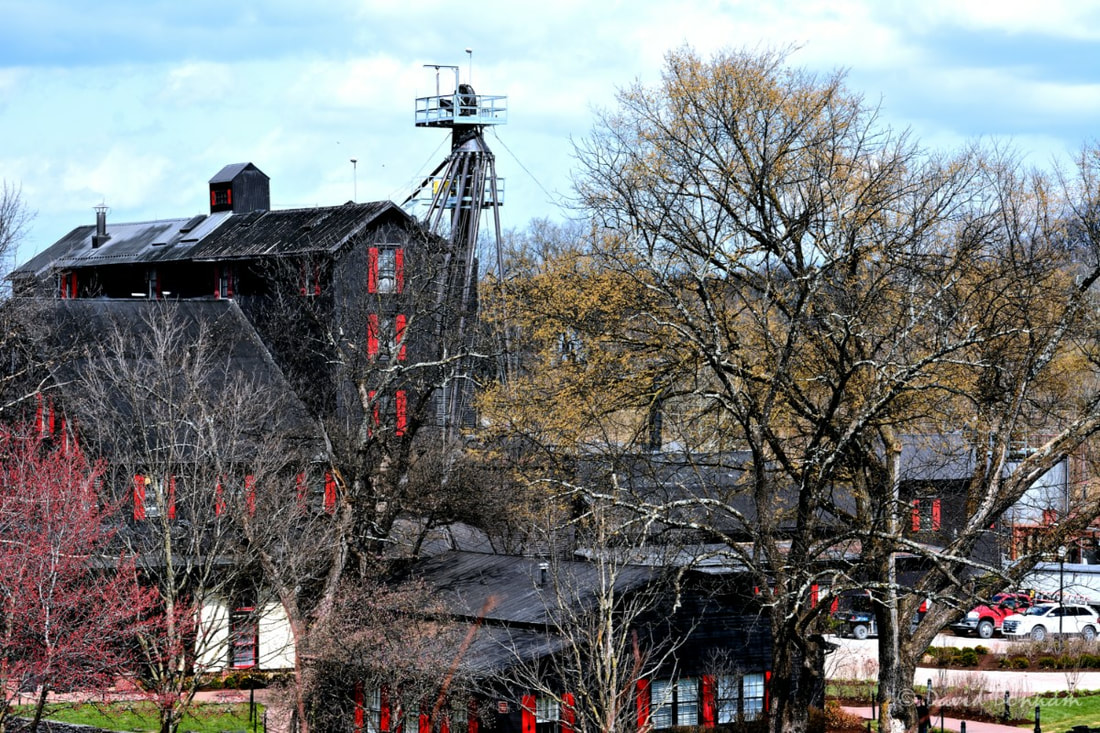
The Makers’ Mark distillery was not just right off the highway. Seems like we went forever on a winding, blacktop, county road before we got there. The setting in terms of the grounds and buildings is much more rustic than the Beam distillery.
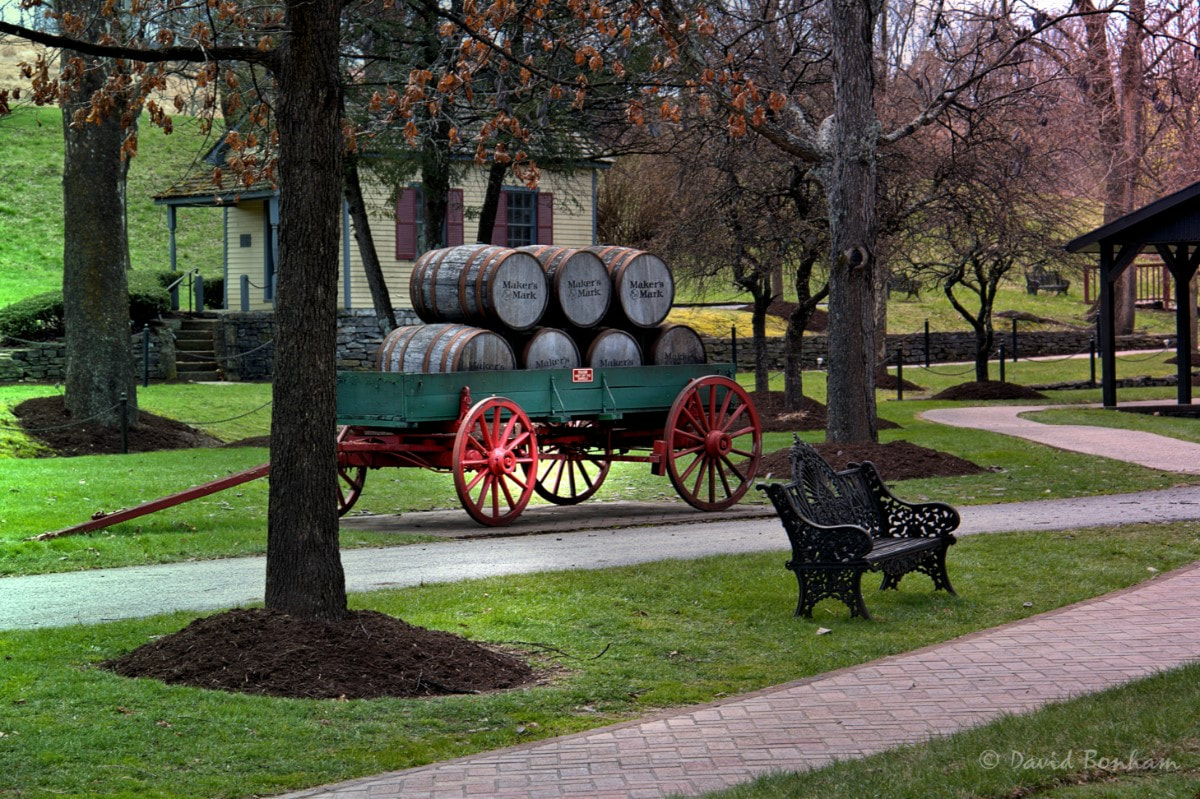
Their touch of red on the buildings really pops with the black background.
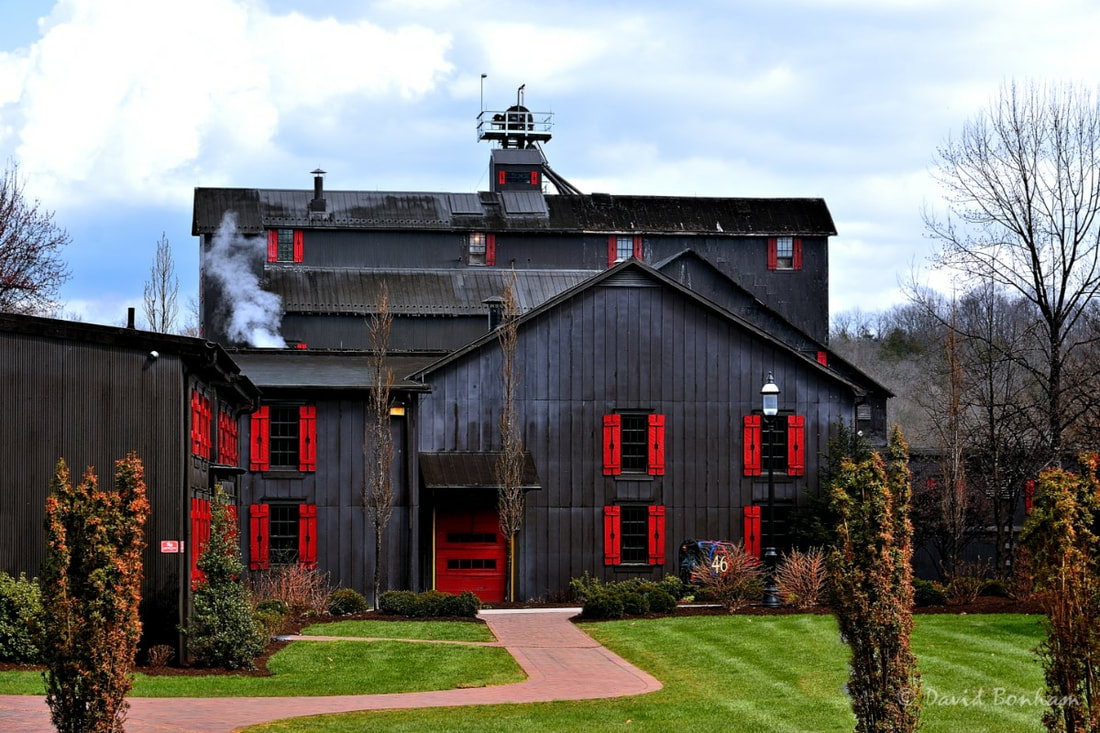
As I said the two distilleries have very different feels to them but I wouldn’t say I like one tour more than the other. Both were very interesting in their own way. I will admit though that the bourbon tasting at the end of the tours was much better at Makers’ Mark than at Jim Beam.
At the end of the Jim Beam tour you are ushered into an open room divided up by soda-like dispensers and tall tables. The room accommodates two tour groups. At a bar is a line of about a dozen Jim Beam products (they have more than that) ranging from their Jim Beam white label to Knob Creek. The tour guide gave a very cursory talk about the differences in the products and then gave us a credit-like card that was good for three samples at the dispensers. I may be wrong but the pours seemed like they were less than a full shot, but if that were the case I wouldn’t hold it against them. Knob Creek was one of the choices in the dispensers and even if it were only the 100 proof version vs. the 120 proof, three shots is quite a bit of alcohol and just like a bar or a restaurant that serves alcohol I’m sure they have liability concerns to deal with.
Below is what the tasting looked like at Makers’Mark. The tour group of about twenty people were ushered into a room with four or five long tables with a place setting of five drinks. We sat at the tables like in a classroom looking at a speaker in the front of the room. He took the time to explain each drink separately before we tasted it. He told us what kind of flavor notes and smells we might experience. With the last two he explained how one was a higher proof than another but may have less bite to it as it had been aged longer than the lower proof sample.

A couple of more shots of the grounds at Makers’ Mark.
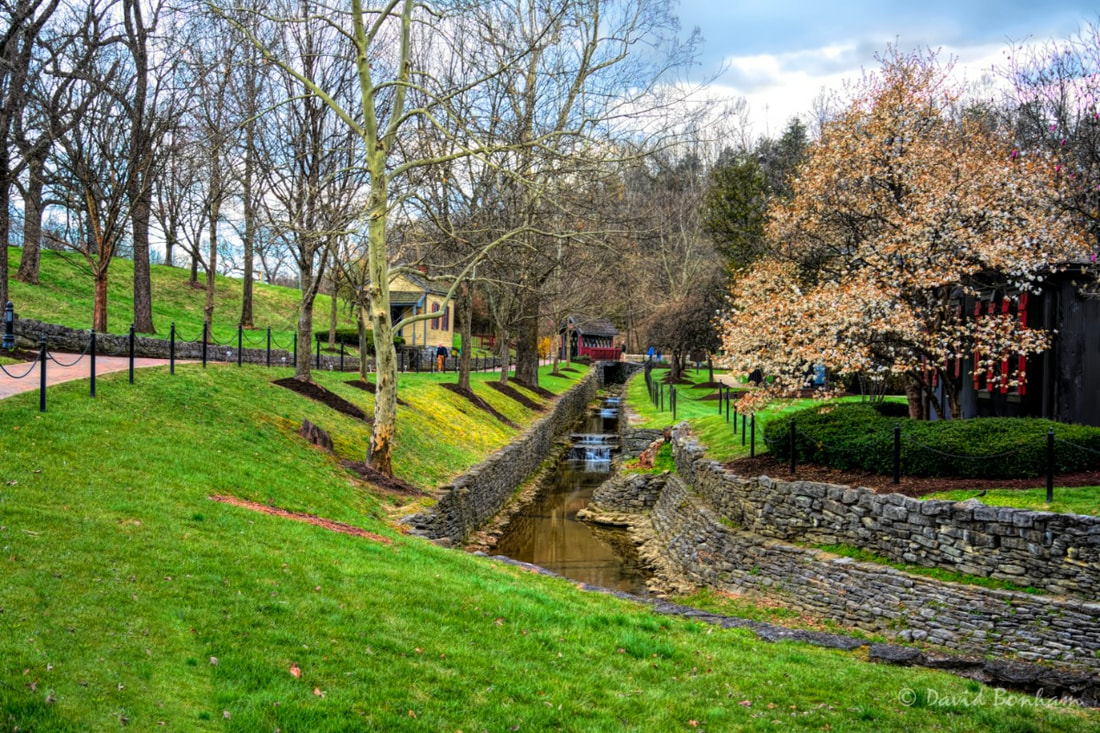
This is the back of the main building you enter and get queued up for the tour. A rustic three story farmhouse compared to the giant rustic looking but modern made steel still house at Jim Beam shown in the first photo.
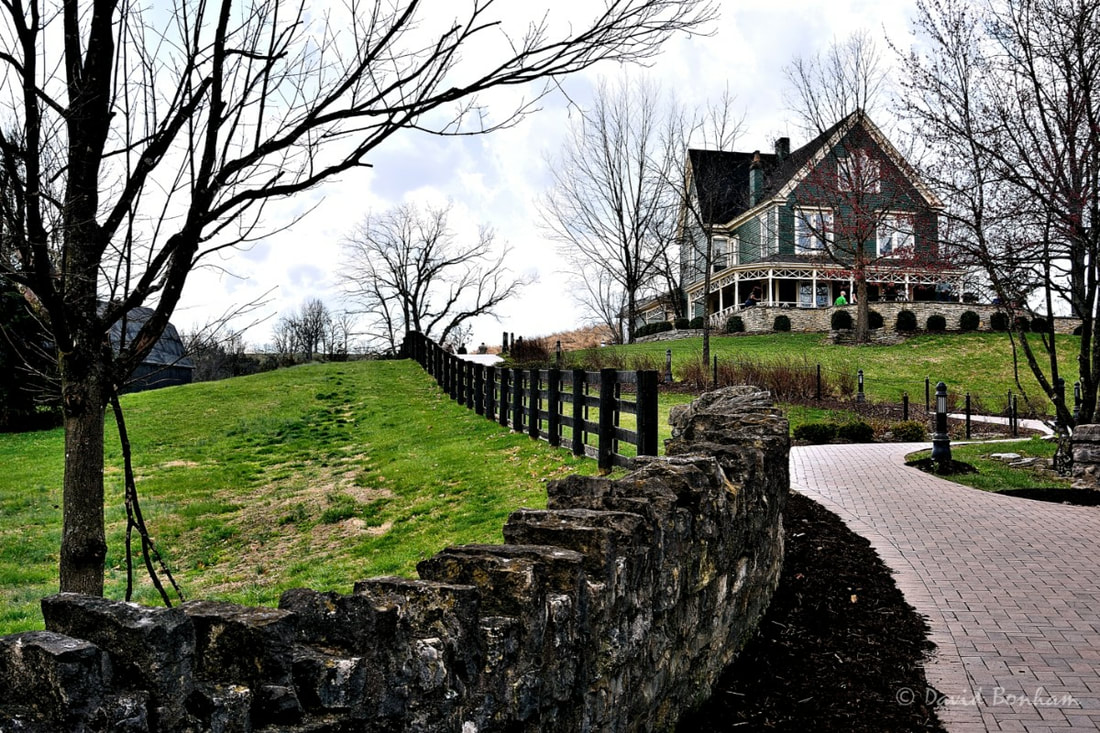
If you are ever in the Louisville area and decide you want to tour the Makers’ Mark distillery I strongly suggest you get directions from someone who has been there and can be very specific. It’s off the beaten track and seems to go on forever. We got directions from our guide at Jim Beam who used to be a guide and Makers’ Mark. Not surprising since both distilleries have been owned by the same Japanese company the past several years.
My wife and the other two ladies with us did not in any way like bourbon before we took these two tours. After the tours their opinions have not changed at all. Hmm … maybe our next tour should be a cigar factory.
Thank you for stopping by.
David
Fascinated by those bourbon tours, we sell both brands in the store I work in, sadly not my drink though,
LikeLiked by 1 person
Very nice trip, thanks for taking us along.
LikeLiked by 1 person
Thank you and you’re welcome.
LikeLike
Wanderful trip and images. Thanks for sharing David.
LikeLiked by 1 person
You’re welcome and thank you for commenting. I apologize for this late response but I just now noticed you had commented.
LikeLike
Interesting info, David, very nice photos too. Great chuckles throughout, as well! We’ve never been on a bourbon or whiskey tour, but I think we’d find it interesting if we did. Maybe one day!
LikeLiked by 1 person
Thanks Donna. I think anyone with a little bit of curiosity would enjoy a tour whether they’re a fan of the drink or not.
LikeLiked by 1 person
Ah, I don’t like bourbon either. But this was a fun read! You should do your own travel guides, you know. I love the black-and-red of the distilleries. It looks straight out of a fairy tale.
LikeLiked by 1 person
Thank you Gabriela, I’m glad you enjoyed this. I think travel guides are out of the questions because I really don’t travel that much and it is really too much writing for me. Looking at my folders I think I’ve got one more long winded post after my post this week and then I’ll be back to my one sentence birds and the bees and flower posts, hopefully for a good while.
LikeLiked by 1 person
” designer label” I would have never connected the bat to it, but it is a fine point indeed! I have not touch a drink for more then 20 years now but I was once a great friends with Mr “Jim Bean” for a many years. Nice work on photo’ing it all.
LikeLiked by 1 person
Thank you John, that designer label thing just struck me as I was thinking about what a big deal that bat was when I was a kid. That and the Mattel Fanner 50.
LikeLike
Your commentary is as good as your photos and your photos are pretty damn good. 👍🏼
LikeLiked by 1 person
Thanks, I really appreciate that!
LikeLike